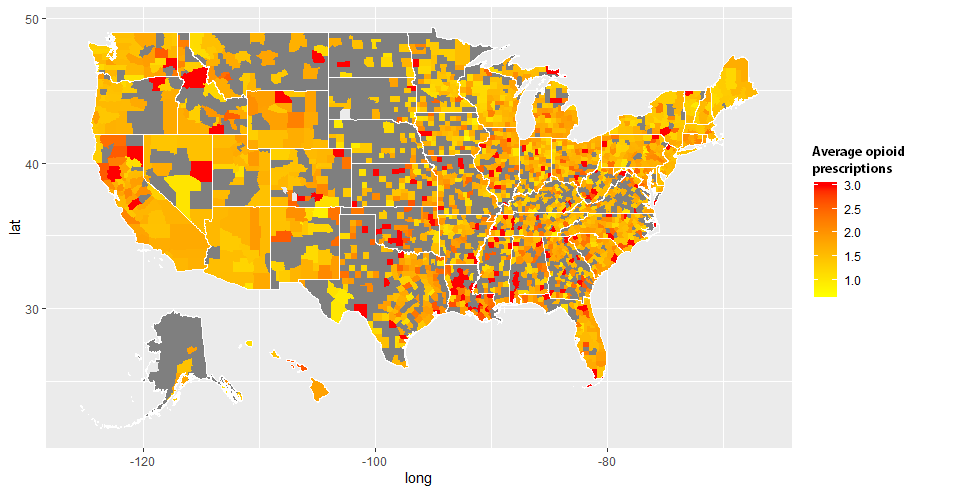Postoperative Opioid Prescription in The United States: A Nationwide County-Level Analysis
*Apostolos Gaitanidis, *Inge van Erp, *Kerry Breen, *Lydia Maurer, *Leon Naar, *Mohamad El Moheb, *April Mendoza, *Noelle Saillant, George Velmahos, Haytham Kaafarani
Massachusetts General Hospital, Harvard Medical School, Boston, MA
Objective: Overprescribing of postoperative opioid medications contributes to the United States (US) opioid epidemic by diversion of unused pills. We sought to examine the variation and temporal trends in postoperative opioid prescription in the US over a 4-year period.
Design: Medicare part D nationwide analysis between 2013 and 2017
Setting: 1,969 US counties
Participants: All prescribing surgeons grouped by county
Main Outcome Measure: Mean opioid prescriptions per Medicare beneficiary (nationally and by county) over 4 years. In addition, multivariable linear regression analyses (adjusting for county demographics, socioeconomic status, health status, healthcare quality and access to healthcare) were performed to identify predictors of higher opioid prescribing.
Results: The mean number of opioid prescriptions per Medicare beneficiary decreased nationally from 1.08 ± 0.61 in 2013 to 0.87 ± 0.55 in 2017 (p<0.001). The majority of US counties (81.6%) showed a reduction in the number of opioid prescriptions per beneficiary from 2013 to 2017. Multivariable analyses showed that counties with higher healthcare costs (OR 1.35, 95% CI: 1.09-1.67, p=0.005), lower numbers of mental health providers per 1,000 residents (OR 1.02, 95% CI: 1.01-1.03, p=0.018) and urban location (OR 1.03, 95% CI: 1.01-1.04, p=0.003) were independently associated with more opioid prescriptions per beneficiary.
Conclusions: There has been a significant decrease in postoperative opioid prescribing both nationally and in most US counties. Identification of social determinants of overprescribing such as lack of mental health services might provide policymakers with insights on how to tackle the epidemic. 
Back to 2020 Abstracts
